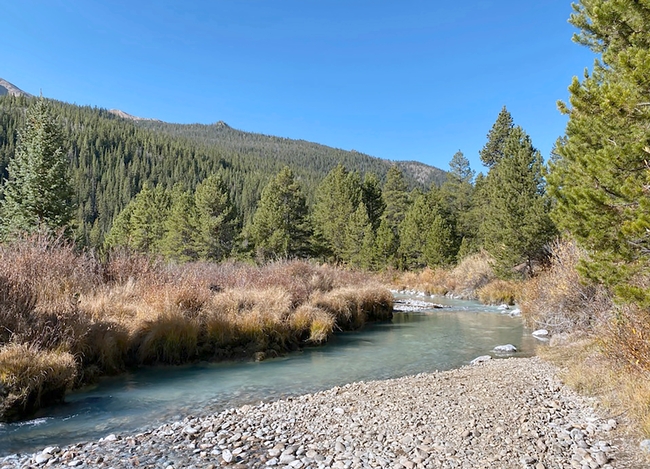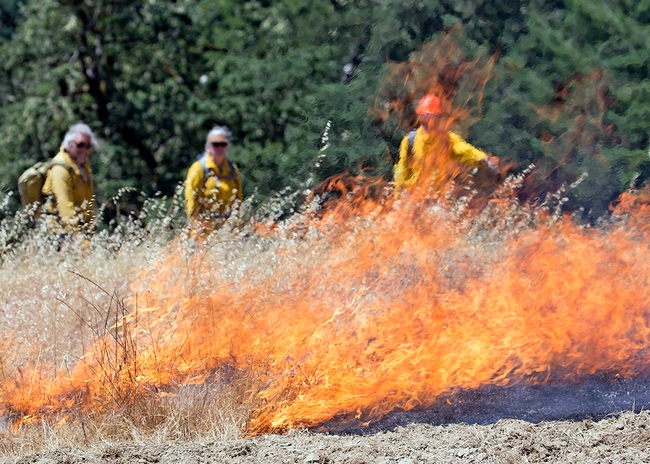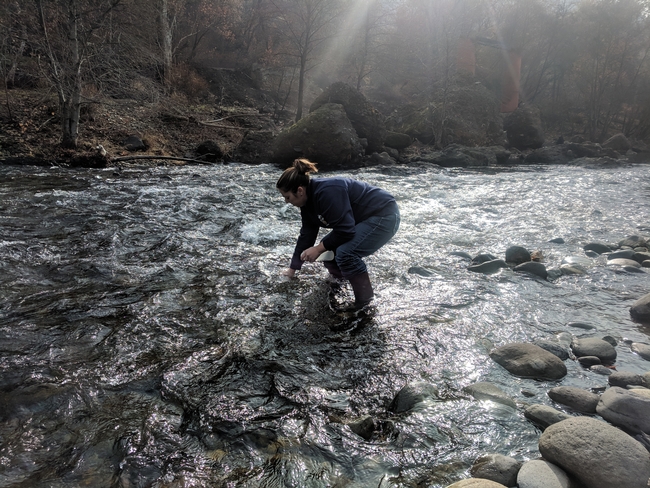How can California protect its water supply from wildfire?
Stakeholders from across disciplines and institutions offer recommendations to ensure safe, reliable water supply amid a growing wildfire threat
It's intuitive that wildfires can affect ecosystems, harm wildlife and contaminate streams and rivers. But wildfires can also have complex, severe and direct effects on our water supply and infrastructure — effects that have only become clear in recent years. Scientists and policymakers must integrate insights and experience from many disciplines and sectors to understand and address the consequences.
In September, 23 scholars and practitioners with a diversity of water and fire expertise came together to answer a critical question: How can California proactively protect its water supply from fires? Their findings, combined with the insights of the author team, form the basis of a new scoping report, released by the University of California Division of Agriculture and Natural Resources' California Institute for Water Resources and the UCLA Luskin Center for Innovation.
“Different people have different pieces of the puzzle, but it's really hard to put them together. That is why we assembled this cross-sector group,” said Faith Kearns, academic coordinator at the California Institute for Water Resources.
Illustrated by the 2017 Tubbs Fire in Wine Country, it has been recognized that community water systems face effects that last long after the fire is quenched. For example, Boulder Creek residents in Santa Cruz County still did not have reliable water access more than a year after firefighters extinguished the 2020 CZU Lightning Complex Fire.
“This is truly an emergent issue,” said co-author Peter Roquemore, project manager at the Luskin Center for Innovation. “We have only seen wildfires directly affect community water systems in the past few years.”
To help California policymakers, researchers, affected communities, and water system operators understand the complex relationship between wildfire damage and water supply, the report authors and participants in this workshop present a set of recommendations:
- Make communications more accessible, consistent and trustworthy. Residents must receive timely, unified messaging, translated into appropriate languages and in accessible venues, telling them if their water is unsafe and how to access clean water.
- Invest in local capacity and expertise. The challenges faced vary widely for different communities, and it is important to provide each community with the resources it needs to address the risk it faces. As part of this, efforts should support Indigenous leadership, knowledge and practices to help manage healthy ecosystems.
- Provide guidance to update regulations. Guidance such as building codes and infrastructure regulations will help individuals and communities make informed decisions and address risk appropriately.
- Conduct research and build a broader base of knowledge. There is still much to learn, and it is important to illustrate the exact challenges water systems face and how best to address them.
- Make funding accessible and targeted. Increased earmarked funding for emergency water supplies, housing assistance, and support for water systems, local organizations, and others will help advance solutions.
- Further coordinate efforts to address water and fire issues. Focusing on these interconnected issues together, rather than tackling them separately, can lead to substantial benefits.
To read the specific recommendations identified, read Wildfire and Water Supply in California. Funding for this research was provided by the U.S. Geological Survey through the California Institute for Water Resources.




Posted by Bob Archer on December 9, 2021 at 3:58 PM